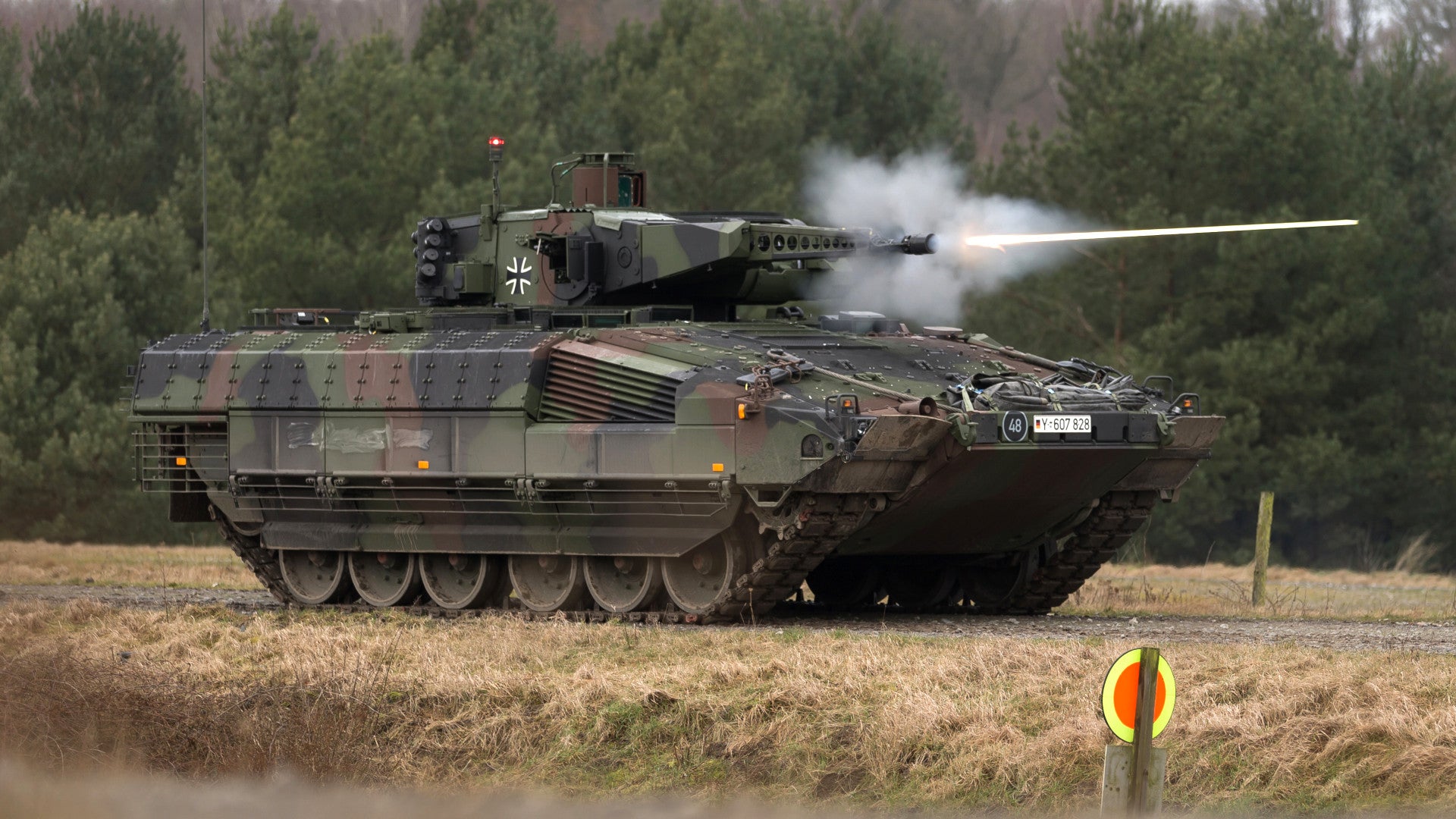A senior U.S. Army acquisition official recently had to cancel plans to view a demonstration of the German Puma infantry fighting vehicle. The revelation is curious given that the service rejected this same design in a previous competition and the Germany’s Rheinmetall, together with American partner Raytheon, is already competing to replace the Bradley Fighting Vehicle family with another vehicle.
On Mar. 16, 2019, Defense News was first to report that the U.S. Army’s Jeffrey White, who serves as a deputy to Assistant Secretary of the Army for Acquisition, Logistics, and Technology Bruce Jette, had been planning to observe the Puma in action at the German Army’s Munster training facility. The event ended up cancelled due to a scheduling conflict and it is not clear whether or not White, or another Army official, will get to see the demonstration in the end.
It is also unclear why White was looking to see the Puma in the first place. The Army is in the midst of a program to acquire a replacement for the Bradley, formally as the Optionally Manned Fighting Vehicle (OMFV), which is part of the larger Next Generation Combat Vehicle (NGCV) effort. But there has been no previous indication that Rheinmetall or Krauss Maffei Wegmann, who developed the Puma as a joint venture, would look to submit this particular design.
In October 2018, Rheinmetall did announce its intention to bid on the OMFV deal, in cooperation with Raytheon, but with a vehicle based on its new KF41 Lynx design. The demonstration could indicate that the Army is looking at Puma, as well.

“Many of our NATO allies have very capable tanks,” Secretary of the Army Mark Esper told reporters in January 2018 during a visit to U.S. Army Europe’s headquarters in Germany. “As I think about a next-generation combat vehicle, we should look at our allies, and look at their designs, and look at how they’ve built combat vehicles and combat systems, and think about adopting some of those.”
The Army has actually already evaluated Puma itself as part of the abortive Ground Combat Vehicle (GCV) program, which began in 2009. For that competition, Rheinmetall and Krauss-Maffei partnered with American companies Boeing and SAIC.
In 2013, the Congressional Budget Office issued a scathing report lambasting the service over its choice of GCV prototype design, which had ballooned in weight to 84 tons, more than that of an M1 Abrams tank. That same report had said the Puma had been the most capable of the designs the Army had evaluated and would also have saved it almost $15 billion in total program costs. The service ultimately cancelled the GCV program entirely in February 2014.
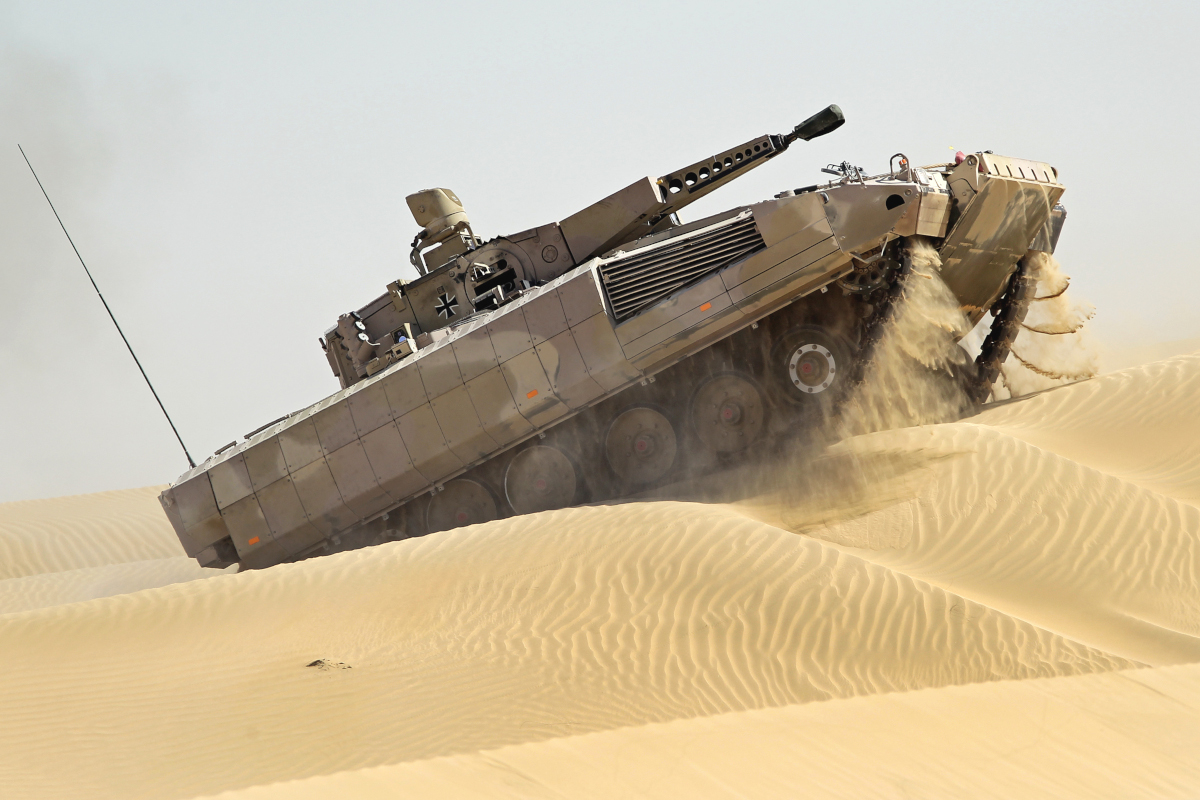
Rheinmetall has been working on Lynx since 2015 as a competitor to the Puma, but has so far not found any customers. The German company developed it with an eye toward the export market and uses a greater number of commercial-of-the-shelf automotive parts and other existing components to reduce overall cost and potential strains on logistics chains.
Rheinmetall also designed the Lynx with modularity in mind so that it could readily accept different mission modules to perform different roles. So far, however, the two variants the company has shown publicly, the KF31 and KF41, are relatively similar.
The KF41 has a larger overall configuration, though, with a weight of around 44 tons, almost 10 tons heavier than the KF31 and even bigger than the Puma in its base configuration. The newer Lynx version also has turret, which is available in manned and unmanned configurations, with a larger 35mm automatic cannon. The turret can also accept modular pods on either side to add anti-tank guided missiles, a launch system for small drones or loitering munitions, or additional equipment.

The Army may still be interested in giving Puma a look given it previous experience and the CBO’s previous assessment of that design. Whoever proposed the demonstration in Germany could be looking toward the future, as well, and potentially billing the Puma, as a contender for the Army’s Robotic Combat Vehicle (RCV) program, another part of the larger NGCV project.
As its name suggests, the Army wants the Bradley-replacing OMFV to be optionally-manned rather than entirely unmanned. The goal is for these vehicles to work in close cooperation with fleets of entirely unmanned and at least semi-autonomous RCVs.
The RCVs could provide additional firepower at lower cost, extend the sensor reach of a formation, scout ahead without risking the manned elements of a force, and more. The Army presently has plans for three tiers of RCVs, the first of which is light design weighing less than 10 tons that the service hopes will be “attritable,” meaning that it will be low cost enough that commanders could treat it as a an asset they could tactically sacrifice on the battlefield if necessary. The RCV program also envisions a medium vehicle between 10 and 20 tons and a heavyweight companion tipping the scales at 20 to 30 tons, which would not be expendable in any way.
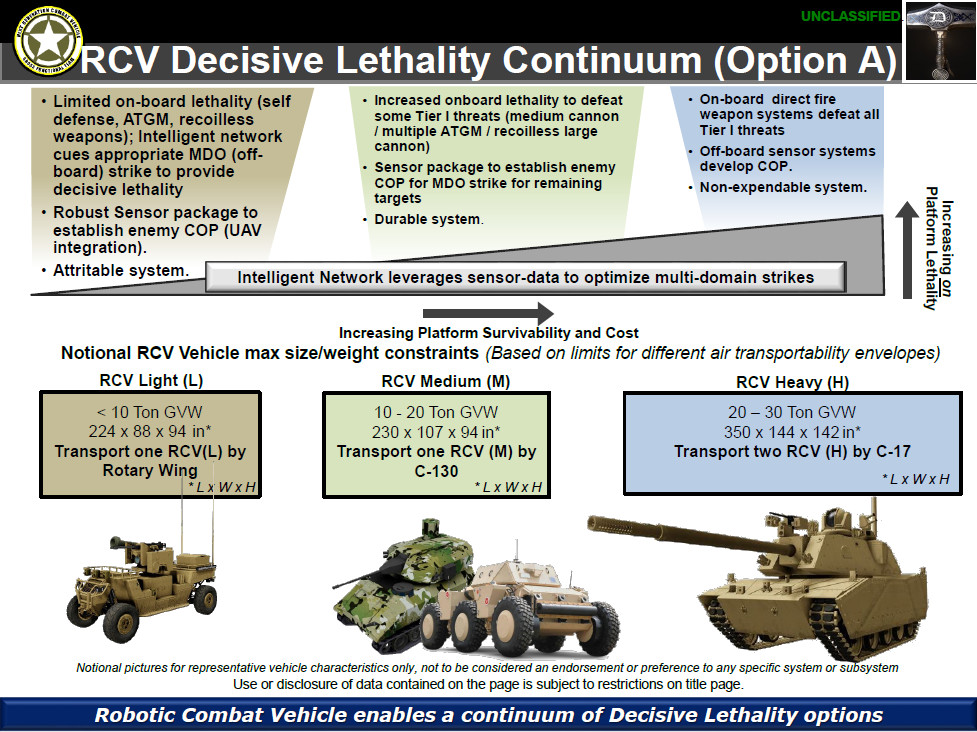
The Army is looking at whether or not small unmanned ground vehicles it is presently testing to help support infantry squads might be able to fill the RCV’s light requirements. The service plans to test that operational concept with units in Europe in 2020. It hasn’t yet said what designs it might be looking at for either of the other two size categories. Though Puma is around 30 tons in its base configuration, an unmanned version, or derivative thereof, could potentially be lighter and fit in the heavy tier.
It would certainly make logistical sense too, if at all possible, to adopt OMFVs and RCVs that use similar designs. Puma, or Lynx, operating in an optional unmanned mode could be a valuable testbed for both technologies for future RCVs or as a means of developing tactics, techniques, and procedures for heavy mechanized ground operations involving manned-unmanned teams.
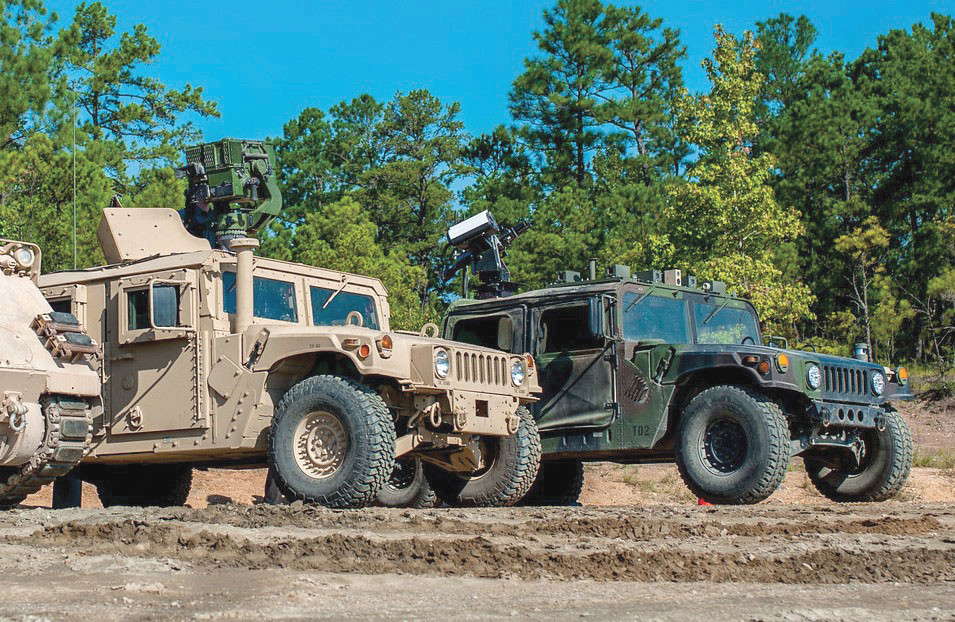
Finding a way to blend bids on different parts of the NGCV program could be a big opportunity for Rheinmetall, Krauss Maffei Wegmann, and any other contenders, too. The OMFV contract by itself stands to be particularly lucrative.
“It’s a big $42 billion franchise program and it’s a big activity, so we need to get started quickly,” Raytheon’s Brand Barnard said regarding potential plans to establish domestic production capacity for Lynx in Michigan, according to local Fox News report on Mar. 14, 2019. “But we have started in the right place.”
The Army has a very aggressive timeline for the OMFV program, which may have also led to it looking at what value the existing Puma design might have, even as a surrogate for testing. It’s latest budget request, the service cut the amount of Bradleys it expects to upgrade to the new A4 configuration by a fifth in favor of new vehicles. Earlier in March 2019, the service also announced that it would purchase 14 pre-production OMFV prototypes, as well as other components and services, from each contractor or team it selects to progress to the engineering and manufacturing development phase in 2020.
The present plan is to be able to start low-rate initial production of the selected OMFV design by the middle of 2023 and have the first brigade entirely equipped with the new vehicles by the end of 2025. In parallel, the Army has already begun work on what it calls “NGCV Future Capability,” which will involve multiple operational user evaluations of separate experimental vehicle designs, such as potential RCVs, in the coming years. The service wants to begin buying at least some of the fully unmanned vehicles by 2023, as well.
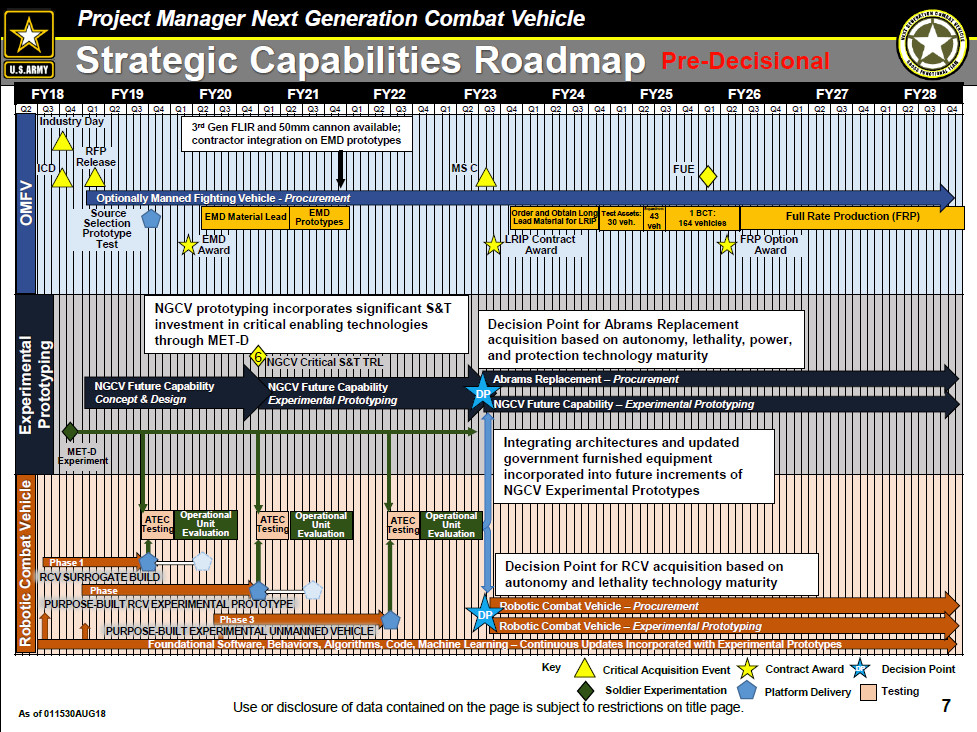
With the Army pushing hard on these various efforts to modernize its armored vehicle fleets, it will be interesting to see whether it gives the Puma a second look after the better part of a decade.
Correction: Any earlier version of this article said that Rheinmetall was the manufacturer of the Puma and that its Lynx was derived from it. Rheinmetall developed Puma together with Krauss Maffei Wegmann and a joint venture company is responsible for the vehicle. Rheinmetall subsequently developed the Lynx by itself as a competing product.
Contact the author: jtrevithickpr@gmail.com
